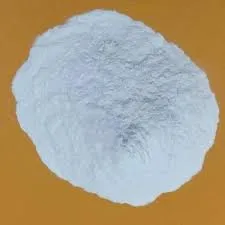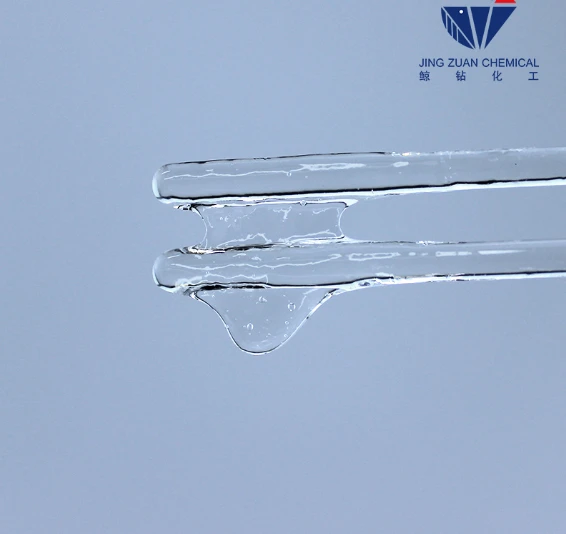
juuni . 06, 2025 15:11 Back to list
Explore Key Redispersible Powder Uses for Construction
- Fundamental properties and versatile applications of redispersible powders
- Technical advantages driving industry adoption metrics
- Performance comparison of leading polymer powder formulations
- Application-specific modification and customization processes
- Real-world implementation across construction sectors
- Emerging innovations and sustainability considerations
- Future developments shaping redispersible powder applications

(redispersible powder uses)
Exploring Core Redispersible Powder Uses in Modern Materials
Redispersible polymer powder (RDP) serves as a critical additive across material science industries. When mixed with water, these free-flowing white powders regain their original polymer characteristics, creating flexible, durable films within cementitious mixtures. Primary applications include:
- Tile adhesives where RDP improves wetting capability and reduces slippage
- External Thermal Insulation Composite Systems (ETICS) providing impact resistance
- Self-leveling compounds enhancing flow properties and surface leveling
- Repair mortars increasing bond strength to existing substrates
- Gypsum-based plasters reducing water absorption and improving workability
Over 65% of modern construction adhesives now integrate polymer powders according to European Federation of Construction Chemicals data. The global RDP market is projected to reach $4.3 billion by 2028, driven by construction sector demands for high-performance materials.
Technical Performance Advantages
Redispersible powders transform material performance through fundamental chemical mechanisms. When added at 3-5% weight of cementitious binders, RDP particles form interpenetrating networks within the cement matrix. This creates:
- Enhanced flexibility demonstrated by up to 400% improvement in deformation capacity
- Superior adhesion properties with bond strength increases exceeding 200%
- Reduced water absorption rates by 35-60% compared to unmodified systems
- Accelerated strength development during early curing phases
- Improved freeze-thaw resistance critical for exterior applications
Particle size distribution significantly impacts performance parameters. Manufacturers optimize particle diameters between 80-150 microns for balanced dispersion kinetics. Advanced ethylene vinyl acetate (EVA) formulations maintain effectiveness across temperature ranges from -25°C to 90°C, significantly expanding application possibilities.
Material Formulator Comparison
| Manufacturer | Core Technology | Specialization | Min. Film Formation Temp | Key Application |
|---|---|---|---|---|
| Wacker VINNAPAS | Acetate-ethylene copolymer | Water resistance | 0°C | Waterproofing membranes |
| Celanese AOSEC | Vinyl acetate versatate | Flexural strength | -5°C | Tile adhesives |
| DCC S-3045 | Acrylate copolymer | Alkali resistance | +5°C | Exterior plasters |
| SHOVAIR RDP | Vinyl laurate copolymer | Flexibility | -8°C | Crack-resistant mortars |
Selection criteria must consider specific performance requirements. EVA-based powders typically show superior workability, while vinyl versatate formulations offer enhanced hydrophobic properties critical for wet environments. Leading manufacturers provide specialized grades optimized for either adhesive strength or flexibility performance.
Application-Specific Customization
Modern RDP technologies enable precise adaptation to diverse material requirements:
Customization Parameters:
- Glass transition temperature (Tg) adjustment (-10°C to +25°C)
- Particle size distribution control (50μm - 200μm)
- Hydrophobicity modification through comonomer ratios
- Reactivity control with cement hydration chemistry
Dry-mix mortar producers implement specialized formulations based on application requirements. Flexible tile adhesives typically incorporate Tg-optimized powders ranging from -7°C to +7°C, while exterior insulation systems utilize highly hydrophobic versions with water absorption values below 5% by weight. Advanced encapsulation techniques allow incorporation of additives like setting accelerators or defoamers within the polymer matrix, creating multi-functional formulations.
Industry Implementation Examples
The Burj Khalifa construction project integrated specialized RDP-enhanced mortars to withstand extreme wind loads and thermal cycling at record heights. Project engineers reported a 40% improvement in long-term adhesion compared to standard formulations during accelerated aging tests.
Additional Application Cases:
- Underfloor heating systems utilizing RDP-modified self-leveling compounds with dimensional stability >98%
- Offshore platform repair mortars maintaining integrity in marine environments
- Historical monument restoration with compatible, vapor-permeable formulations
- Highway infrastructure joint fillers withstanding traffic vibration fatigue
Prefabrication facilities report production efficiency increases of 15-20% through controlled setting behavior enabled by polymer modification. Precast element manufacturers achieve demolding times reduced to 5-7 hours without compromising final strength development.
Evolution and Technical Refinements
Material scientists continue advancing redispersible powder technology through several key developments:
- Biopolymer integration achieving 40% renewable content without performance compromise
- Reactive copolymer systems forming covalent bonds with mineral substrates
- Low-VOC formulations meeting stringent indoor air quality standards
- Nanoparticle incorporation enhancing barrier properties
The European Committee for Standardization recently adopted EN 15824 classification systems that quantify sustainability metrics. Top-tier RDP products now demonstrate carbon footprints below 1.2kg CO₂-eq/kg powder while maintaining optimal performance characteristics. Advanced particle engineering allows production of powders with controlled dissolution rates, expanding possibilities for spray applications.
Forward Path in RDP Powder Uses
Redispersible polymer powder applications continue evolving beyond traditional construction sectors. Emerging utilization areas include 3D printing materials needing controlled rheology modifications and flexible electronics manufacturing. Material scientists predict three key development vectors:
- Functionalized powders incorporating antimicrobial properties
- Self-healing formulations activated by environmental factors
- Smart composite materials responding to thermal/mechanical stimuli
The next generation of redispersible powders will likely incorporate phase-change materials for thermal regulation applications and reactive components for autonomous crack-sealing functionality. As formulation complexity increases, so does performance potential - expect 30-50% efficiency improvements in targeted applications within the coming decade. The fundamental versatility of these materials ensures continued expansion across manufacturing sectors worldwide.

(redispersible powder uses)
FAQS on redispersible powder uses
Q: What are the common uses of redispersible powder?
A: Redispersible powder is primarily used in dry-mix mortars to enhance adhesion and water resistance. Common applications include tile adhesives and exterior wall systems. This improves durability and workability in construction materials.
Q: How is redispersible polymer powder applied in building materials?
A: Redispersible polymer powder boosts flexibility and bond strength in renders, screeds, and repair mortars. It re-disperses in water to form a protective film. This enhances performance in applications like waterproofing membranes.
Q: What specific applications does RDP powder have?
A: RDP powder (redispersible polymer powder) is used in self-leveling compounds and plasters. It provides cohesive strength and reduces cracking in joint fillers. Common uses also include insulation systems for improved thermal stability.
Q: Why choose redispersible powder for tile adhesives?
A: Redispersible powder is chosen for tile adhesives to increase bond integrity and resistance to moisture. It minimizes shrinkage and enhances flexibility under stress. This ensures reliable installation and long-term performance.
Q: What are the benefits of using redispersible polymer powder in industrial products?
A: Benefits include superior re-dispersibility for easy mixing and improved abrasion resistance. It adds long-term stability in applications like EIFS (Exterior Insulation Finishing Systems). This optimizes cost-efficiency and material consistency.
-
Versatile Hpmc Uses in Different Industries
NewsJun.19,2025
-
Redispersible Powder's Role in Enhancing Durability of Construction Products
NewsJun.19,2025
-
Hydroxyethyl Cellulose Applications Driving Green Industrial Processes
NewsJun.19,2025
-
Exploring Different Redispersible Polymer Powder
NewsJun.19,2025
-
Choosing the Right Mortar Bonding Agent
NewsJun.19,2025
-
Applications and Significance of China Hpmc in Modern Industries
NewsJun.19,2025







